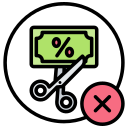
Tools and Supplies: Tax Deduction Insights for Canadian Freelancers
Chosen theme: Tools and Supplies: Tax Deduction Insights for Canadian Freelancers. Welcome! If you create, code, shoot, design, edit, consult, or craft independently in Canada, this guide helps you turn everyday tools and supplies into smart, compliant tax deductions. Subscribe for practical tips, share your questions, and join a community that makes freelancing financially confident and creatively fearless.
What Counts as Tools and Supplies for Canadian Freelancers
Think laptops, cameras, lenses, microphones, drawing tablets, lighting kits, toolkits, external drives, and ergonomic chairs as tools; plus printer ink, gaffer tape, SD cards, pens, notebooks, packaging, and shipping labels as supplies.
Capital vs. Current: Expense Now or Depreciate with CCA
Consumables vs. durable gear
Supplies you consume within a year, like ink or batteries, are usually current expenses. Longer‑lasting gear, like cameras, monitors, or power tools, is typically capital and deducted over time.
Common CCA classes freelancers encounter
Computers and related systems software often fall under Class 50; many general equipment items fall under Class 8; certain software or small tools may be Class 12. Rates and rules can change—confirm with CRA guidance.
First‑year limits and timing considerations
The half‑year rule often restricts first‑year CCA claims. Some accelerated measures have existed in recent years, but they evolve. Check current CRA details before year‑end purchases to avoid surprises.



GST/HST: Input Tax Credits on Tools and Supplies
Registration and the small supplier threshold
Once your taxable supplies exceed the small supplier threshold, registration is generally required. From then on, track GST/HST on purchases and sales carefully to support accurate filings and claimable credits.
Claiming ITCs the right way
Keep invoices showing your business name, vendor GST/HST number, tax paid, and date. Claim only the business‑use portion of each tool or supply, and store documents digitally so nothing is lost.
Cross‑border and e‑commerce nuances
Buying gear from the U.S.? Watch for import GST and brokerage fees, which may be partly recoverable. For subscriptions, confirm whether tax was charged and document the provider’s details clearly.
Map purchases to your workload
If a new lens will help deliver a December project flawlessly, buying now may boost revenue and support a deduction. If it will sit idle, wait until it truly earns its keep.
Plan around depreciation rules
For capital tools, earlier acquisition can start CCA sooner, but first‑year limits still apply. Run a simple forecast to compare tax savings versus cash required and realistic business use.
Document intent and outcomes
Write a short rationale when you buy major gear: client demand, capacity bottleneck, or quality upgrade. Later, pair outcomes—new contracts or reduced revisions—to validate the expense’s business purpose.



A Freelance Case Study and Practical Checklist
Maya upgraded a prime lens and stocked SD cards before wedding season. She apportioned shared items carefully, claimed ITCs after registering, and logged each purchase’s project. Tax time felt unexpectedly calm.
A Freelance Case Study and Practical Checklist
Collect receipts; note purpose; tag business percentage; classify as current or capital; record GST/HST; back up documents; reconcile statements monthly; and review CRA updates each quarter for rule changes.
